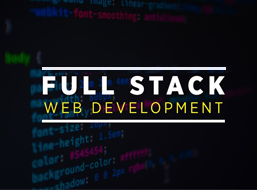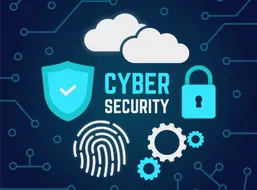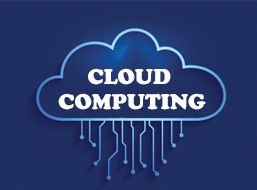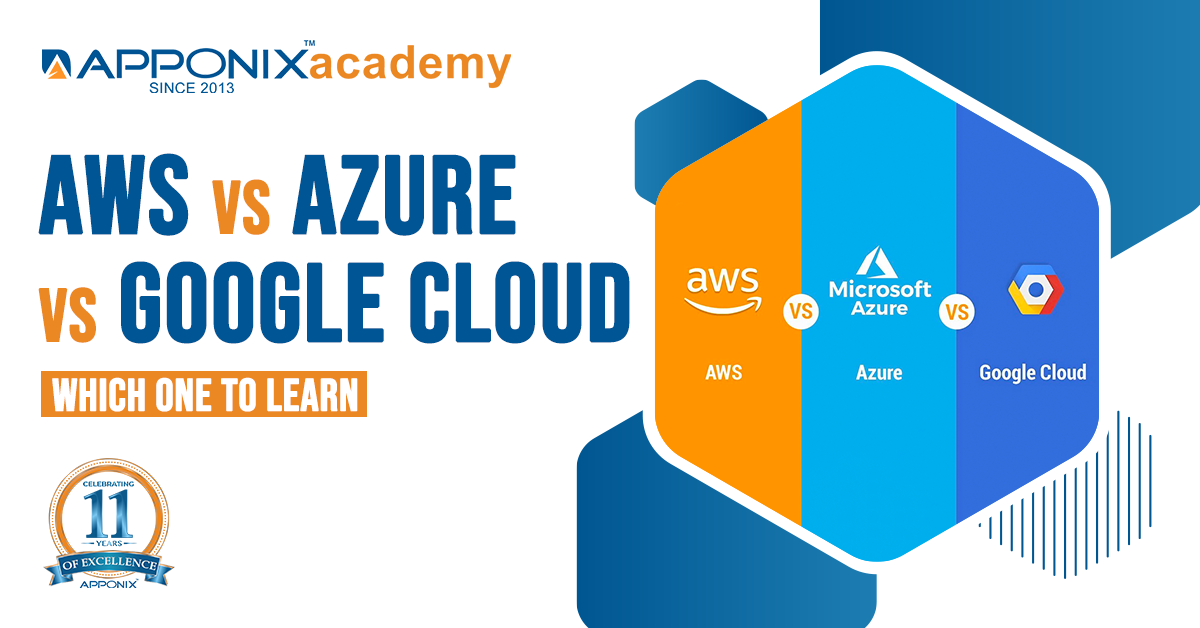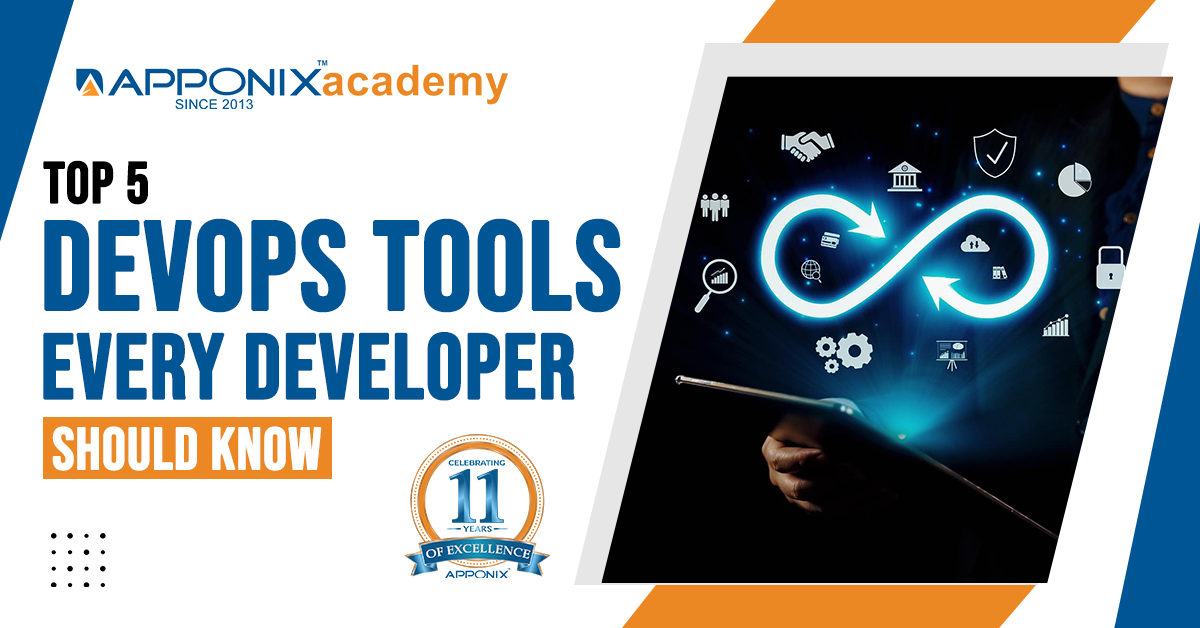Common Project Management Interview Questions and Answers
1. What is Project Management?
Project Management involves planning, organizing, and executing projects to meet specific goals and objectives within a set time frame and budget. It includes managing resources, risks, scope, and stakeholders to ensure successful project delivery.
2. What are the main phases of project management?
The main phases of project management are initiation, planning, execution, monitoring and controlling, and closing. These phases help ensure that the project is delivered on time, within scope, and within budget.
3. What is the role of a Project Manager?
The Project Manager (PM) is responsible for overseeing the project from start to finish, ensuring it is completed successfully. This includes managing teams, resources, risks, budgets, and timelines while ensuring stakeholder satisfaction.
4. What is the difference between a project and an operation?
A project is a temporary endeavor aimed at achieving specific objectives, with a clear start and end. An operation is ongoing, focusing on sustaining and maintaining business processes and services.
5. What is the triple constraint in project management?
The triple constraint refers to the balance between scope, time, and cost. These three elements are interdependent, and a change in one usually impacts the others.
6. What are the key components of a project charter?
A project charter includes the project’s purpose, objectives, high-level requirements, stakeholders, risks, milestones, and budget. It formally authorizes the project and serves as a
foundation for planning.
7. What is a Work Breakdown Structure (WBS)?
A WBS is a hierarchical decomposition of the project scope into smaller, manageable components. It helps break down large tasks into smaller, more manageable units to facilitate planning and control.
8. What is a Gantt Chart?
A Gantt Chart is a type of bar chart that represents the project schedule. It displays the start and finish dates of project elements, showing dependencies between tasks and project timelines.
9. What are the different types of project life cycles?
The main project life cycles are predictive (waterfall), iterative, incremental, and agile. Each cycle offers a different approach to project management depending on the project’s nature and requirements.
10. What is the critical path method?
The Critical Path Method (CPM) is a scheduling technique that identifies the longest path of dependent tasks in a project, which determines the shortest project duration. Tasks on the critical path cannot be delayed without delaying the entire project.
11. What is earned value management (EVM)?
Earned Value Management (EVM) is a project management technique that integrates scope, schedule, and cost to assess project performance. It compares the planned progress with actual performance to determine whether the project is on track.
12. What is stakeholder management?
Stakeholder management involves identifying, analyzing, and managing the expectations of individuals or groups who are affected by the project. Effective stakeholder management ensures their needs are met and their influence is controlled throughout the project.
13. What are the key components of risk management in projects?
Risk management involves risk identification, assessment, mitigation planning, response planning, and monitoring. It ensures that potential risks are minimized or managed to prevent negative impacts on the project.
14. What are the different types of project risks?
Project risks can be categorized into external, internal, technical, operational, financial, and organizational risks. Each category requires different strategies to manage effectively.
15. What is the purpose of a project scope statement?
The scope statement defines the boundaries of the project, including deliverables, requirements, and exclusions. It serves as a guideline to ensure that all stakeholders understand and agree on the project’s objectives.
16. What is the difference between qualitative and quantitative risk analysis?
Qualitative risk analysis evaluates risks based on their impact and likelihood using subjective judgment. Quantitative risk analysis uses numerical techniques to assess the probability and potential impact of risks on the project’s outcomes.
17. What is a project schedule and why is it important?
A project schedule outlines the start and finish dates of tasks, dependencies, milestones, and resources. It is crucial for tracking project progress, allocating resources, and ensuring timely project delivery.
18. What are the different types of project procurement contracts?
The types of procurement contracts include fixed-price contracts, cost-reimbursable contracts, and time and materials contracts. Each type defines how costs and payments are structured and managed throughout the project.
19. What is the difference between a project milestone and a deliverable?
A project milestone is a significant point in the project timeline that marks the completion of a phase or key activity. A deliverable is a tangible or intangible product or outcome produced as part of the project.
20. What is scope creep?
Scope creep refers to the uncontrolled or unapproved expansion of a project’s scope. It often occurs when additional tasks or features are added without proper change control, impacting the project’s timeline and budget.
21. What is the importance of communication in project management?
Communication is crucial in project management because it ensures that all stakeholders are informed, aligned, and able to contribute effectively to the project’s success. It helps prevent misunderstandings and conflicts.
22. What is project integration management?
Project integration management involves coordinating and aligning all aspects of the project, ensuring that various components work together efficiently. It includes developing project plans, managing changes, and ensuring stakeholder satisfaction.
23. What is a project resource plan?
A project resource plan outlines the resources needed for the project, including human resources, equipment, and materials. It helps ensure that resources are available when needed and are used efficiently throughout the project.
24. What is the purpose of the project closing phase?
The project closing phase involves finalizing all project activities, including completing deliverables, obtaining formal acceptance, releasing resources, and documenting lessons learned. It ensures that the project is formally completed and stakeholders are satisfied.
25. What is a project risk register?
A risk register is a tool used to document identified risks, their potential impact, likelihood, and mitigation strategies. It serves as a living document to monitor and manage risks throughout the project lifecycle.
26. What is the difference between a functional and a matrix project organization?
A functional project organization assigns resources to projects based on their department or function. A matrix organization combines functional and project-based structures, allowing resources to report to both functional managers and project managers.
27. What is the purpose of a project quality management plan?
A project quality management plan defines the quality standards and processes to ensure the project meets the required standards. It outlines quality assurance, quality control, and continuous improvement strategies.
28. What is a project risk response plan?
A risk response plan outlines actions to take when identified risks occur, including risk mitigation, avoidance, transfer, or acceptance. It helps prepare the project team to respond effectively to risks.
29. What is the Delphi technique?
The Delphi technique is a method for forecasting and decision-making that gathers input from experts through multiple rounds of questioning. It is commonly used for risk identification and estimating project timelines.
30. What is a project communication management plan?
A communication management plan defines the communication strategies, tools, and channels used during the project. It ensures that all stakeholders receive timely and accurate information and that communication is efficient.
31. What is resource leveling?
Resource leveling is a technique used to balance resource allocation throughout the project. It adjusts the project schedule to ensure that resources are not over-allocated and that tasks are completed without delays.
32. What is the Monte Carlo simulation in project risk management?
The Monte Carlo simulation is a statistical technique used to model the probability of different outcomes in project risk management. It simulates various scenarios to predict the likelihood of specific risks affecting the project’s timeline and budget.
33. What is the importance of stakeholder engagement in project management?
Stakeholder engagement is crucial because it ensures that all stakeholders are identified, their expectations are understood, and they are kept informed. Proper engagement helps build trust, reduces resistance, and enhances project success.
34. What is project scope management?
Project scope management involves defining and controlling what is included and excluded in the project. It includes processes for creating the project scope, validating deliverables, and managing changes to the scope.
35. What is resource smoothing?
Resource smoothing is a technique that adjusts the project schedule without affecting the project’s critical path. It redistributes resource usage to ensure smoother resource utilization without impacting project completion.
36. What is project cost management?
Project cost management involves estimating, budgeting, and controlling project costs to ensure the project is completed within the approved budget. It includes tracking actual expenses and forecasting future costs.
37. What is the difference between a project risk and an issue?
A risk is a potential problem that may or may not occur, while an issue is a problem that has already occurred. Risks require mitigation or contingency planning, while issues require immediate resolution.
38. What are the different types of project stakeholders?
Project stakeholders can include the project sponsor, project manager, team members, customers, suppliers, regulatory bodies, and any other individual or group impacted by the project.
39. What is the 80/20 rule in project management?
The 80/20 rule, or Pareto Principle, states that roughly 80% of the effects come from 20% of the causes. In project management, it often refers to the idea that a small number of tasks or resources contribute to most of the project’s success or challenges.
40. What is project procurement management?
Project procurement management involves acquiring goods and services from external sources for the project. It includes planning procurement, selecting vendors, and managing contracts to ensure successful delivery of external resources.
41. What is Agile project management?
Agile project management is an iterative and flexible approach to managing projects, primarily used in software development. It focuses on delivering value to customers in short cycles, called sprints, and adapting to changing requirements.
42. What is a project baseline?
A project baseline is a snapshot of the project’s approved scope, schedule, and cost at a specific point in time. It serves as a reference for measuring project performance and controlling changes during execution.
43. What is change control in project management?
Change control is the process of managing and controlling changes to the project’s scope, schedule, or cost. It ensures that changes are evaluated, approved, and documented to minimize negative impacts on the project.
44. What are key performance indicators (KPIs) in project management?
Key performance indicators (KPIs) are measurable values that assess the success of a project. Examples include schedule variance, cost performance index, and customer satisfaction.
45. What is a project risk management plan?
A project risk management plan outlines how risks will be identified, assessed, managed, and monitored throughout the project lifecycle. It helps prepare the project team to respond effectively to potential risks.
46. What is the difference between a fixed-price and time-and-materials contract?
A fixed-price contract defines a set price for the project, while a time-and-materials contract is based on hourly rates for labor and costs for materials. Fixed-price contracts are riskier for the contractor, while time-and-materials contracts are more flexible.
47. What is project time management?
Project time management involves defining, scheduling, and controlling the duration of project activities to ensure timely completion. It includes creating a project schedule and monitoring progress.
48. What is the difference between a product backlog and a sprint backlog?
The product backlog is a prioritized list of features or work items to be delivered throughout the project. A sprint backlog is a list of tasks selected for completion during a specific sprint in Agile project management.
49. What is the Delphi Method in estimating project timelines?
The Delphi Method is a forecasting technique that gathers estimates from a panel of experts through multiple rounds of anonymous input and feedback. It is used to reach a consensus on project timelines or risks.
50. What is a project management office (PMO)?
A Project Management Office (PMO) is a centralized unit within an organization that defines and maintains project management standards and practices. It provides support, governance, and oversight for projects across the organization.
51. What is a stakeholder register?
A stakeholder register is a document that identifies and categorizes all the stakeholders involved in the project. It includes details such as their interests, influence, expectations, and level of engagement with the project
.52. What is the significance of a project’s baseline schedule?
A baseline schedule defines the approved start and finish dates for all project activities. It serves as a reference for tracking project performance, identifying delays, and controlling changes in schedule during the project’s execution.
53. What is a RACI chart?
A RACI chart is a matrix used to clarify roles and responsibilities within a project. It stands for Responsible, Accountable, Consulted, and Informed. The chart helps to avoid confusion over who is responsible for each task.
54. What are the benefits of using Agile in project management?
Agile project management offers flexibility, adaptability, faster delivery of value, and continuous feedback from stakeholders. It allows teams to adapt to changes in requirements and priorities, ensuring better alignment with customer needs.
55. What is the purpose of a project team?
A project team works together to achieve the project’s objectives. The team’s role includes executing project tasks, managing resources, identifying and resolving issues, and collaborating to meet deadlines and deliver quality results.
56. What is resource constraint in project management?
A resource constraint occurs when a project has limited access to required resources, such as manpower, materials, or equipment. This limitation can impact the project’s schedule, budget, or scope and requires effective resource management to mitigate its effects.
57. What is the difference between a project manager and a program manager?
A project manager oversees individual projects, ensuring they meet objectives, stay on schedule, and align with the budget. A program manager, on the other hand, manages a collection of projects within a program to ensure they align with broader organizational goals.
58. What is project portfolio management (PPM)?
Project portfolio management (PPM) involves managing a collection of projects and programs in alignment with organizational strategy. PPM ensures that resources are allocated efficiently and that projects are prioritized based on strategic value.
59. What is a dependency in project management?
A dependency is a relationship between two or more tasks or activities in a project, where one task must be completed before another can begin. Understanding dependencies helps in scheduling tasks and identifying potential risks in the project timeline.
60. What is Monte Carlo analysis in project risk management?
Monte Carlo analysis is a statistical method used to simulate different risk scenarios in a project. It generates a range of possible outcomes based on probabilities, helping to assess the potential impact of risks on project costs and timelines.
61. What is the importance of leadership in project management?
Leadership in project management involves guiding, motivating, and supporting the project team. Strong leadership ensures that project goals are clearly defined, risks are managed, and the team is aligned with the project’s vision and objectives.
62. What is the difference between qualitative and quantitative project risk analysis?
Qualitative risk analysis evaluates risks based on their likelihood and impact using subjective methods, such as expert judgment. Quantitative risk analysis involves numerical techniques to assess and model the probability and potential impact of risks on project outcomes.
63. What is the purpose of a change management plan?
A change management plan outlines how changes to the project will be handled. It ensures that changes are properly assessed, approved, communicated, and integrated into the project, minimizing disruptions to scope, schedule, and resources.
64. What is earned value analysis (EVA)?
Earned value analysis (EVA) is a method used to assess project performance by comparing the planned progress with actual progress. It integrates scope, cost, and schedule metrics to help determine if a project is on track or deviating from its objectives.
65. What is a work breakdown structure (WBS)?
A work breakdown structure (WBS) is a hierarchical decomposition of the project’s scope into smaller, manageable tasks. It helps in organizing and defining the total work required for project delivery, making it easier to assign responsibilities and track progress.
66. What is the critical chain method in project management?
The critical chain method (CCM) is a scheduling technique that focuses on managing resource dependencies and constraints. Unlike the critical path method (CPM), which focuses on task dependencies, CCM addresses the availability of resources to ensure project success.
67. What are project management methodologies?
Project management methodologies are structured approaches to managing projects, including traditional methods like Waterfall, as well as Agile, Scrum, Kanban, Lean, and others. Each methodology offers specific processes and techniques suited for different types of projects.
68. What is project scope creep, and how can it be prevented?
Scope creep is the uncontrolled expansion of a project’s scope without adjustments to time, cost, or resources. It can be prevented through proper scope definition, change control processes, and regular monitoring and approval of scope changes.
69. What is the role of a sponsor in project management?
A project sponsor provides high-level support, funding, and decision-making for the project. They ensure that the project aligns with the organization's objectives and help remove obstacles that could impact its success.
70. What are the different types of project costs?
Project costs can be categorized into direct costs (e.g., labor, materials) and indirect costs (e.g., overhead, administrative expenses). Other types include fixed costs, variable costs, and sunk costs, each impacting the project’s budget.
71. What is the Delphi technique in project management?
The Delphi technique is a method for obtaining expert opinions through anonymous surveys. It is commonly used for risk identification, estimating project timelines, and forecasting project outcomes.
72. What is project monitoring and controlling?
Project monitoring and controlling involve tracking project performance and making necessary adjustments to ensure the project stays on track. This includes comparing actual performance with the baseline and addressing any deviations through corrective actions
73. What are the main challenges in project management?
Common challenges in project management include scope creep, resource constraints, unclear objectives, lack of stakeholder engagement, poor communication, and risk management. These challenges can hinder project success if not addressed properly.
74. What is project cost estimation?
Project cost estimation involves predicting the costs required to complete the project, including labor, materials, and overhead. Various techniques like expert judgment, analogous estimating, and parametric estimating are used to develop accurate cost estimates.
75. What is the purpose of a risk management plan?
A risk management plan outlines how risks will be identified, assessed, and managed throughout the project. It ensures that potential risks are proactively addressed to minimize their impact on project success.
76. What is project procurement?
Project procurement is the process of obtaining goods and services from external vendors or suppliers. It includes activities such as vendor selection, contract negotiation, and ensuring that the delivered products meet project requirements.
77. What is a stakeholder analysis?
Stakeholder analysis is the process of identifying stakeholders, assessing their influence, interests, and expectations, and developing strategies for managing their engagement throughout the project lifecycle.
78. What is the purpose of project risk identification?
Project risk identification is the process of identifying potential risks that could affect the project’s objectives. Early identification helps develop mitigation strategies, reducing the likelihood and impact of risks on the project.
79. What is the significance of a project quality assurance plan?
A project quality assurance plan defines the activities and processes to ensure that the project meets the required quality standards. It includes guidelines for testing, validation, and continuous improvement.
80. What is the role of a project controller?
A project controller is responsible for overseeing and managing the financial and schedule aspects of a project. They monitor project costs, manage resources, and provide accurate reports to ensure that the project stays within scope, time, and budget.
81. What is a RAID log in project management?
A RAID log is a project management tool used to track Risks, Assumptions, Issues, and Dependencies throughout the project. It helps the project team stay on top of potential obstacles and make informed decisions.
82. What is the importance of stakeholder communication in a project?
Effective stakeholder communication is critical for project success. It ensures that stakeholders are kept informed of project progress, expectations are managed, and any issues or concerns are addressed promptly.
83. What are the benefits of using a Project Management Office (PMO)?
A Project Management Office (PMO) helps standardize project management processes, improves project governance, ensures alignment with organizational strategy, and provides support and resources to project teams.
84. What is project time tracking?
Project time tracking involves monitoring the amount of time spent on various tasks and activities. It helps ensure that the project stays on schedule and allows for accurate reporting and performance analysis.
85. What is the purpose of a project schedule baseline?
A project schedule baseline serves as the approved version of the project’s schedule, including start and end dates for tasks. It is used as a reference point for tracking project progress and managing changes.
86. What is the role of a project coordinator?
A project coordinator supports the project manager by assisting in planning, scheduling, and resource allocation. They handle administrative tasks, maintain project documentation, and ensure communication flows between team members and stakeholders.
87. What is the difference between the Agile and Waterfall project management methodologies?
Agile is an iterative approach that emphasizes flexibility, collaboration, and customer feedback, while Waterfall is a sequential approach that follows a linear, step-by-step process. Agile is preferred for dynamic projects, whereas Waterfall is suitable for projects with clear, fixed requirements.
88. What is a project audit?
A project audit is a review of a project’s processes, performance, and deliverables. It helps identify any issues, areas for improvement, and ensures that the project is complying with standards, regulations, and goals.
89. What is project resource leveling?
Resource leveling is the process of adjusting project schedules to ensure that resources are allocated evenly across tasks, avoiding overallocation or underutilization of resources. It helps maintain a balanced workload and prevents delays.
90. What are the responsibilities of a project manager during the execution phase?
During the execution phase, the project manager is responsible for leading the project team, managing resources, monitoring performance, addressing issues, and ensuring that deliverables meet quality standards and align with project objectives.
91. What is project scope management?
Project scope management involves defining, controlling, and managing the work required to complete the project successfully. It ensures that the project delivers the agreed-upon scope, and any changes are properly managed.
92. What is the significance of a project charter?
A project charter is a formal document that authorizes the project, defines its objectives, and identifies key stakeholders. It provides the project manager with the authority to allocate resources and initiate project activities.
93. What is the purpose of a project communication plan?
A project communication plan outlines how information will be shared with stakeholders throughout the project. It ensures that communication is timely, clear, and aligned with the needs and expectations of all parties involved.
94. What are project milestones?
Project milestones are significant points or events in the project timeline that mark the completion of key deliverables or phases. Milestones help track progress and serve as a reference for assessing project success.
95. What is the difference between primary and secondary risks?
Primary risks are directly related to the project’s objectives and have a direct impact on project success. Secondary risks arise as a result of actions taken to address primary risks, and they may require additional mitigation.
96. What is project scope definition?
Project scope definition is the process of clearly outlining the boundaries and deliverables of the project. It ensures that both the project team and stakeholders have a shared understanding of what is included and excluded from the project.
97. What is the role of a risk response plan in project management?
A risk response plan outlines the actions that will be taken to address identified risks. It includes strategies such as risk avoidance, mitigation, transfer, or acceptance to ensure that risks are effectively managed.
98. What are project deliverables?
Project deliverables are the tangible or intangible outputs produced as part of the project. They include products, services, or results that meet the project’s objectives and are handed over to the stakeholders at the end of the project.
99. What is the significance of project quality management?
Project quality management ensures that the project meets defined quality standards. It involves planning, controlling, and assuring quality to ensure that deliverables meet customer expectations and regulatory requirements.
100. What is a project closing process?
The project closing process involves finalizing all project activities, obtaining approval from stakeholders, and formally closing the project. It includes delivering the final product, completing documentation, and evaluating project performance.
